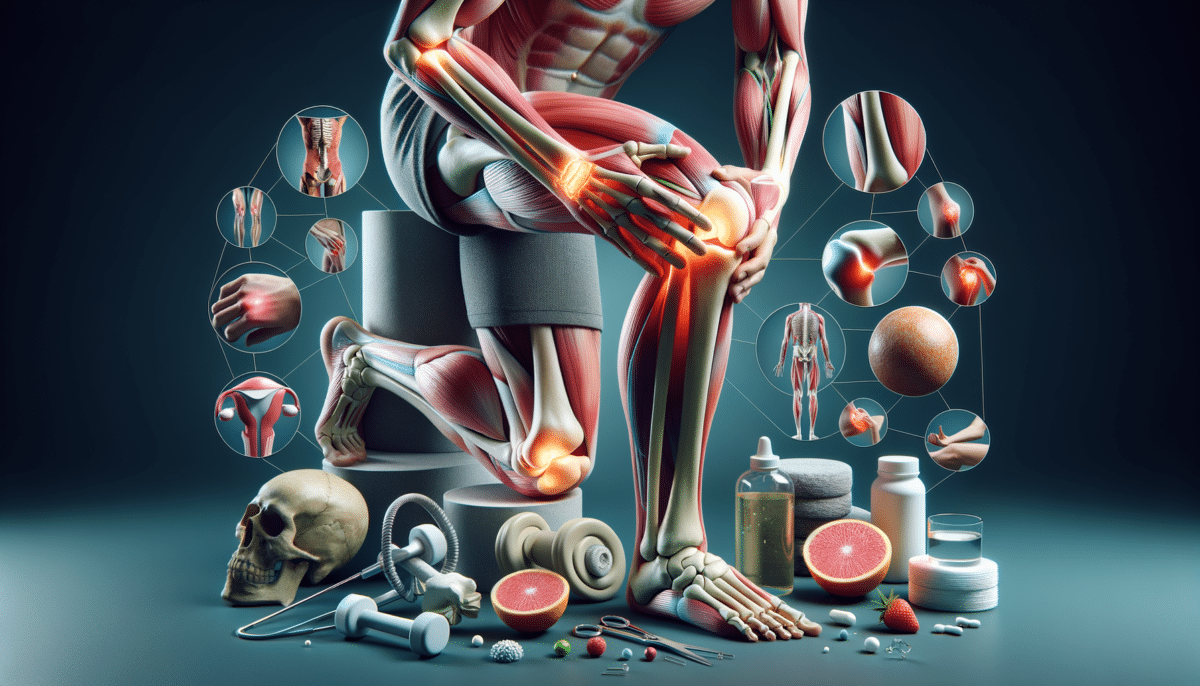The Prevalence and Impact of Joint Pain
Joint pain is a widespread issue that affects people of all ages and backgrounds. It is estimated that millions of individuals worldwide experience some form of joint discomfort, which can range from mild to debilitating. The impact on daily life can be significant, affecting mobility, productivity, and overall quality of life. Joint pain can result from a variety of causes, including arthritis, injuries, or underlying health conditions, making it a complex issue to address.
Understanding the prevalence of joint pain is crucial for developing effective management strategies. According to the Centers for Disease Control and Prevention (CDC), approximately 15 million adults in the United States report severe joint pain related to arthritis alone. This statistic highlights the need for increased awareness and targeted interventions to alleviate the burden of joint pain on individuals and healthcare systems.
Joint pain can lead to a decrease in physical activity, which in turn can exacerbate other health issues such as obesity, cardiovascular disease, and mental health disorders. Therefore, addressing joint pain not only improves the individual’s quality of life but also contributes to better overall health outcomes. Recognizing the widespread nature of joint pain is the first step in tackling this pervasive health concern.
Common Causes of Joint Pain
Joint pain can arise from a multitude of causes, each requiring specific attention and care. One of the most prevalent causes is arthritis, which encompasses over 100 different types, including osteoarthritis and rheumatoid arthritis. Osteoarthritis is a degenerative joint disease that often affects older adults, while rheumatoid arthritis is an autoimmune disorder that can occur at any age.
Injuries are another common cause of joint pain. Sprains, strains, and fractures can lead to acute pain, while repetitive stress injuries can result in chronic discomfort. Conditions such as bursitis and tendinitis, which involve inflammation of the joint tissues, are also frequent culprits.
Other health conditions, such as lupus, gout, or infections, can also lead to joint pain. In some cases, joint pain may be a symptom of a more systemic issue, such as fibromyalgia or Lyme disease. Understanding the underlying cause of joint pain is essential for effective treatment and management. A comprehensive evaluation by a healthcare professional is often necessary to determine the root cause and develop a tailored treatment plan.
Managing Joint Pain: Treatment Options
Effective management of joint pain often requires a multifaceted approach, combining medical treatments with lifestyle modifications. Over-the-counter pain relievers, such as acetaminophen or nonsteroidal anti-inflammatory drugs (NSAIDs), are commonly used to alleviate mild to moderate pain. For more severe cases, prescription medications or corticosteroid injections may be necessary.
Physical therapy is a cornerstone of joint pain management, helping to improve mobility, strengthen muscles, and reduce pain. A physical therapist can design a personalized exercise program that takes into account the individual’s specific needs and limitations. Regular exercise, including low-impact activities like swimming or cycling, can also help maintain joint function and prevent further damage.
In some cases, surgical intervention may be required to address the underlying cause of joint pain. Procedures such as arthroscopy, joint replacement, or fusion can provide relief and improve quality of life. However, surgery is typically considered a last resort after other treatment options have been exhausted.
Preventing Joint Pain: Tips for Healthy Joints
Prevention plays a crucial role in minimizing the risk of joint pain and maintaining healthy joints throughout life. Maintaining a healthy weight is one of the most effective ways to reduce stress on the joints, particularly the knees and hips. A balanced diet rich in anti-inflammatory foods, such as fruits, vegetables, and omega-3 fatty acids, can also support joint health.
Regular physical activity is essential for keeping joints flexible and strong. Engaging in a variety of exercises, including strength training, flexibility exercises, and aerobic activities, can help maintain joint function. It’s important to choose activities that are appropriate for your fitness level and to listen to your body to avoid overexertion.
Protecting joints during daily activities is also important. Using proper techniques when lifting heavy objects, taking breaks during repetitive tasks, and wearing supportive footwear can all help prevent joint injuries. Additionally, staying hydrated and avoiding smoking can contribute to overall joint health.
Conclusion: Embracing a Holistic Approach to Joint Health
Joint pain is a complex issue that requires a comprehensive approach to management and prevention. By understanding the causes and implementing effective strategies, individuals can significantly improve their quality of life and reduce the impact of joint pain. From medical treatments and physical therapy to lifestyle modifications and preventive measures, there are numerous ways to support joint health and minimize discomfort.
Ultimately, taking a proactive approach to joint health can lead to better outcomes and a more active, fulfilling life. Whether you are currently experiencing joint pain or looking to prevent it in the future, embracing a holistic approach that incorporates both medical and lifestyle interventions is key. By staying informed and working closely with healthcare professionals, individuals can take control of their joint health and enjoy a higher quality of life.
